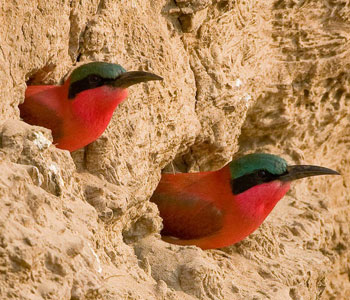Wildebeest Migration
The Wildebeest Migration – every year almost two million wildebeest, zebra, topi and antelope migrate from the vast Serengeti Plains in Tanzania, to the lush rolling grasslands of the Masai Mara, in Kenya. The journey is 1,800 miles and tough and arduous, with many animals falling prey to Africa’s lion, leopard and cheetah – not to mention the crocodiles which lie in wait each year for that first wildebeest to cross the Grumeti and Mara Rivers. Seeing the sheer magnitude of animals amongst the wildebeest migration, as well as the drama and action this extraordinary natural spectacle provokes, is nothing short of miraculous.
See our fantastic Specialist Wildebeest Migration Safari – a combination of the Masai Mara and the Serengeti.
Each year, the patterns change, however see below for an idea of where the wildebeest migration will be at certain times of year (please note that many of our camps are mobile, so they are able to follow the migration throughout the year). Please note, not all camps are listed, although every camp in the Masai Mara (Kenya) and the Serengeti (Tanzania) will be in the centre of the wildebeest migration at one point during the year.
December – March: Ndutu, Southern Serengeti, Ngorongoro Crater. Over 80% of the wildebeest are busy giving birth on the lush flat grasslands of Ndutu, attracting a lot of attention from hungry predators, before beginning their journey all over again.
From Dec – Mar you are most likely to catch the wildebeest migration at: Serengeti Maswa, Olakira
April – May: The Ndutu Plains can no longer sustain the wildebeest, with their new born calves and the migration begins to sweep North into the Serengeti’s Western Corridor.
From Apr – May you are most likely to catch the wildebeest migration at: Olakira, Sabora, Faru Faru
June: The wildebeest move further North again, entering the Lamai wedge in the Northern Serengeti.
In June you are most likely to catch the wildebeest migration at: Lamai Nomad, North Camp
July – October: Countless herds now swell along the Mara River, in search of the sweet grass on the plains of the Masai Mara, in Kenya – this is where they will spend the next few months, eating every blade of grass in sight, and attempting to dodge lions, leopards and cheetah, after facing the famous Mara River Crocodiles.
From Jul – Oct you are most likely to catch the wildebeest migration at: All of the Masai Mara Camps, and all of the Northern Serengeti Camps, just email us for further advice.
November: The arrival of East Africa’s short rains pull the Wildebeest back into Tanzania, and into the North East of the Serengeti, before making their way back down to the Southern Serengeti and Ndutu plains to give birth.
In November you are most likely to catch the wildebeest migration at any of the central Serengeti camps.








